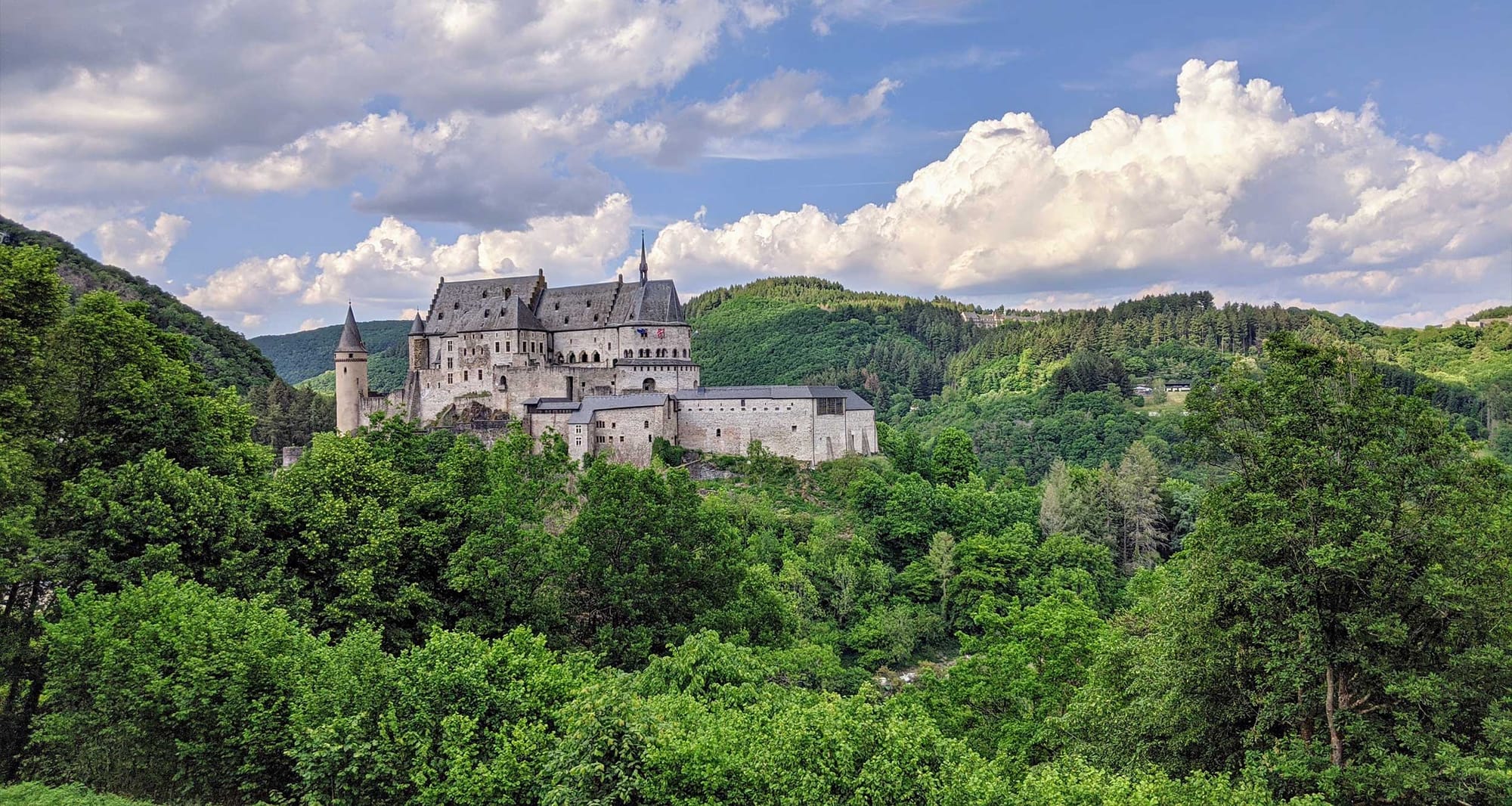
The history of Luxembourg spans more than a thousand years, and that history is on full display throughout the city. Whether you are visiting the city’s old quarter (a UNESCO World Heritage Site) or the ultra-modern Kirchberg district, you’ll find plenty of things to do. See the city’s incredible museums, enjoy lunch in the Place d’Armes or ride into the past on the world’s first virtual reality time machine. Luxembourg City has all of this and more to offer tourists, including those with disabilities. Plan your itinerary with this list of wheelchair accessible attractions in Luxembourg and enjoy exploring one of Europe’s most beautiful cities.
Grand Ducal Palace of Luxembourg
The Grand Ducal Palace is the official residence of the Grand Duke of Luxembourg. Construction of the building was completed in 1572, and it was used as the city hall for more than 200 years thereafter. When Grand Duke Adolphe assumed power in 1890, he made the palace his residence.
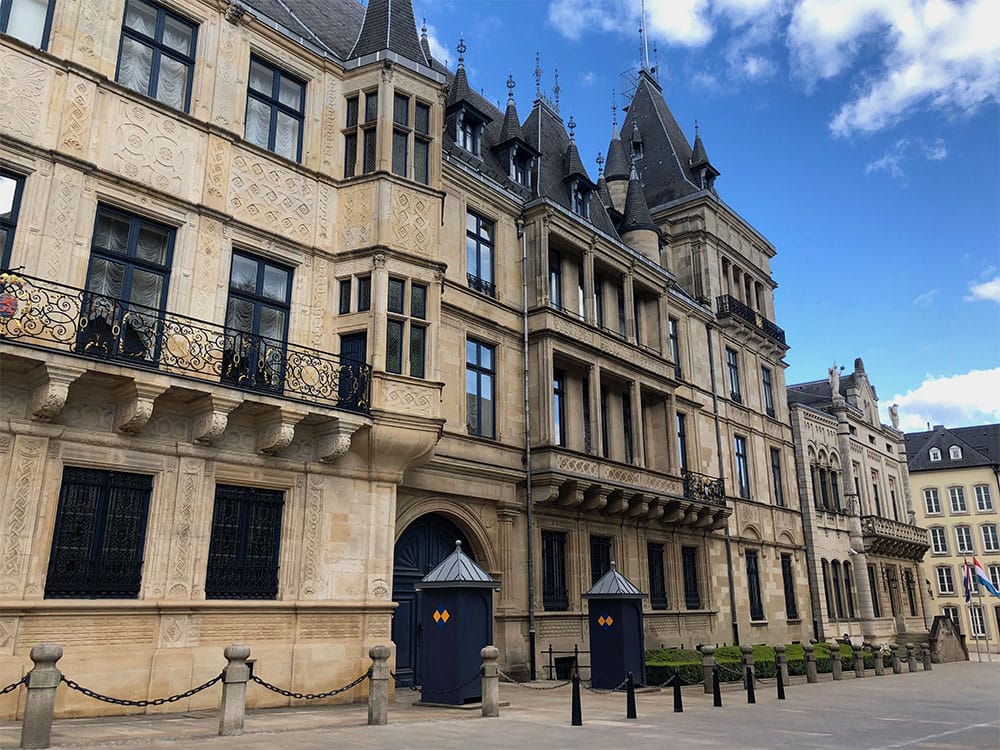
Guided tours of the palace are available from mid-July through the end of August each year. The tour is wheelchair accessible and the cost is € 14 for adults. For more information or to purchase tickets, click here.
Notre-Dame Cathedral, Luxembourg
Construction of what is now the Cathedral of Notre Dame in Luxembourg began in 1613. It was built as a Jesuit church, but in 1870 was designated the seat of the Archdiocese of Luxembourg by Pope Pius IX. The current archbishop is Jean-Claude Hollerich, SJ.
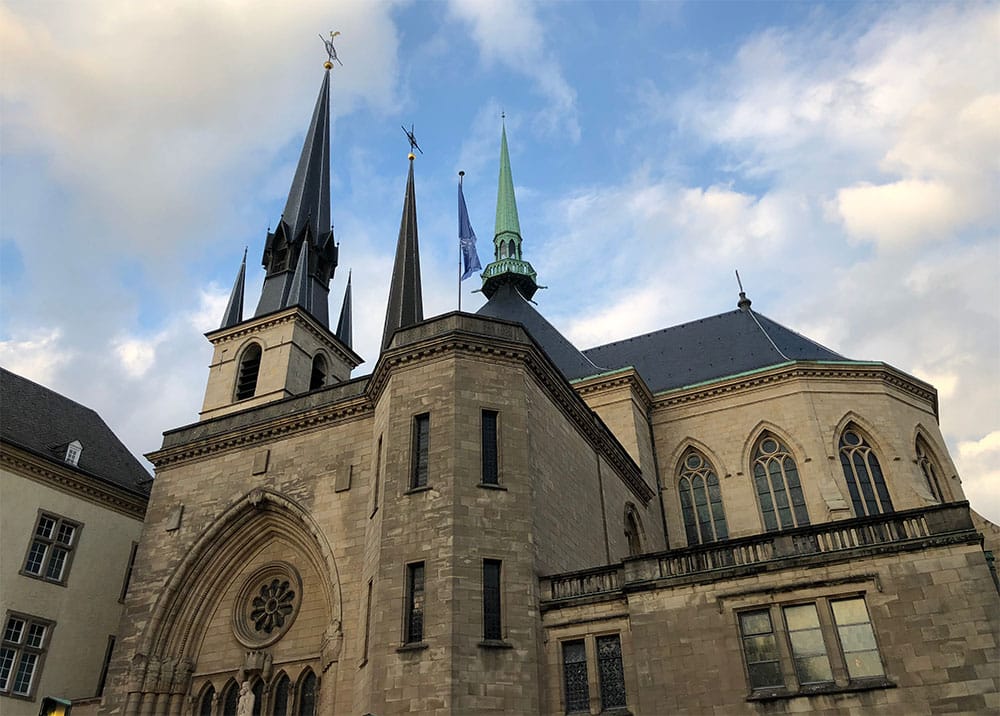
The church was originally designed with only one tower, but two more were added in an expansion carried out between 1935 and 1938. The architects made a great effort to ensure continuity between the expansion and the original gothic structure.
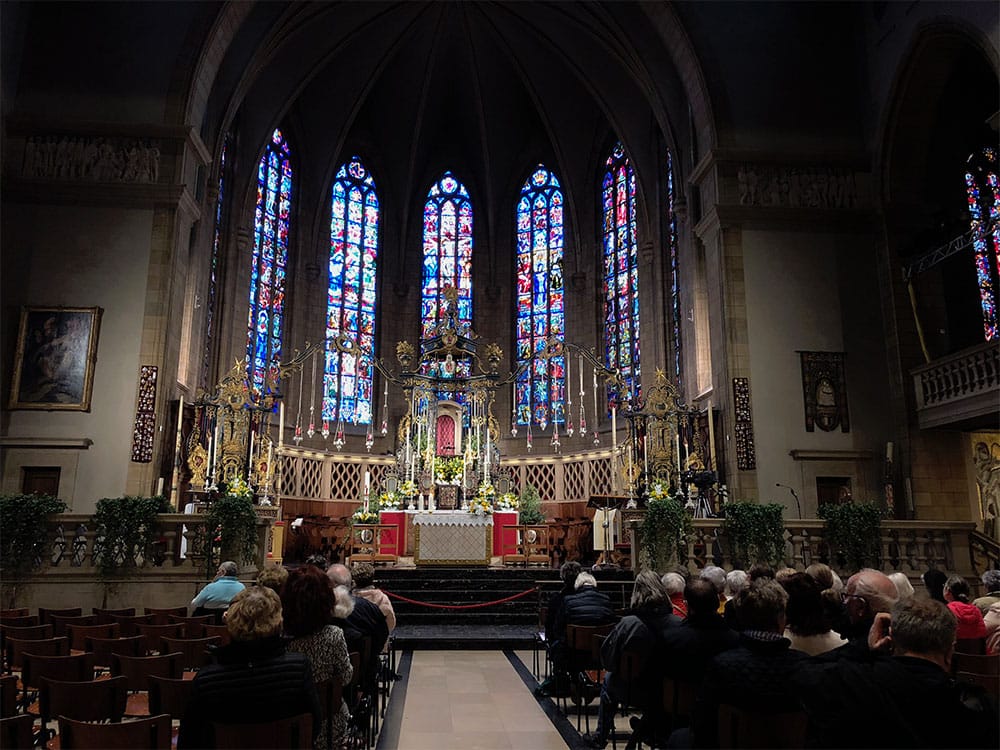
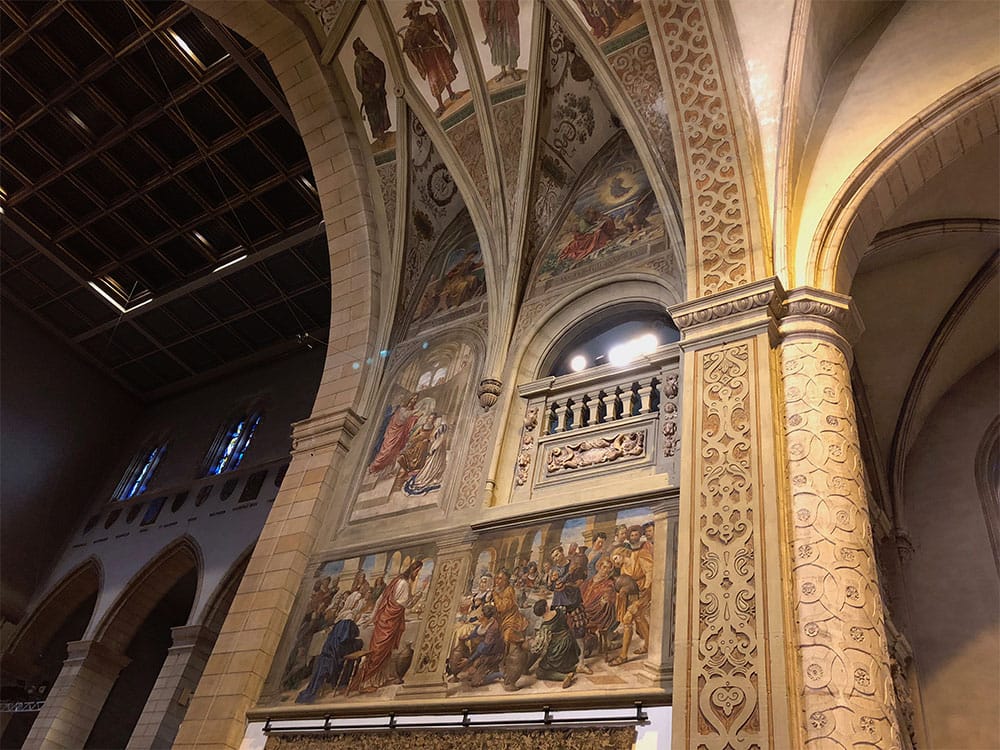
Notre Dame remains an important part of Luxembourg City and the national identity. Buried in the cathedral’s crypt are many of the former Grand Dukes and Grand Duchesses of Luxembourg. Jean I, who reigned as Grand Duke from 1964 until his abdication in 2000, was interred there following his death in May 2019.
The cathedral’s wheelchair accessible entrance is located on the street, Rue Notre Dame. Due to steps, it is not accessible via the main/front entrance pictured above.
Grand Duke Jean Museum of Modern Art
The Grand Duke Jean Museum of Modern Art, or Mudam, opened in 2006 in a building designed by world-renowned architect I.M. Pei. The museum was built on the site of Fort Thüngen, the majority of which was destroyed following the 1867 Treaty of London.
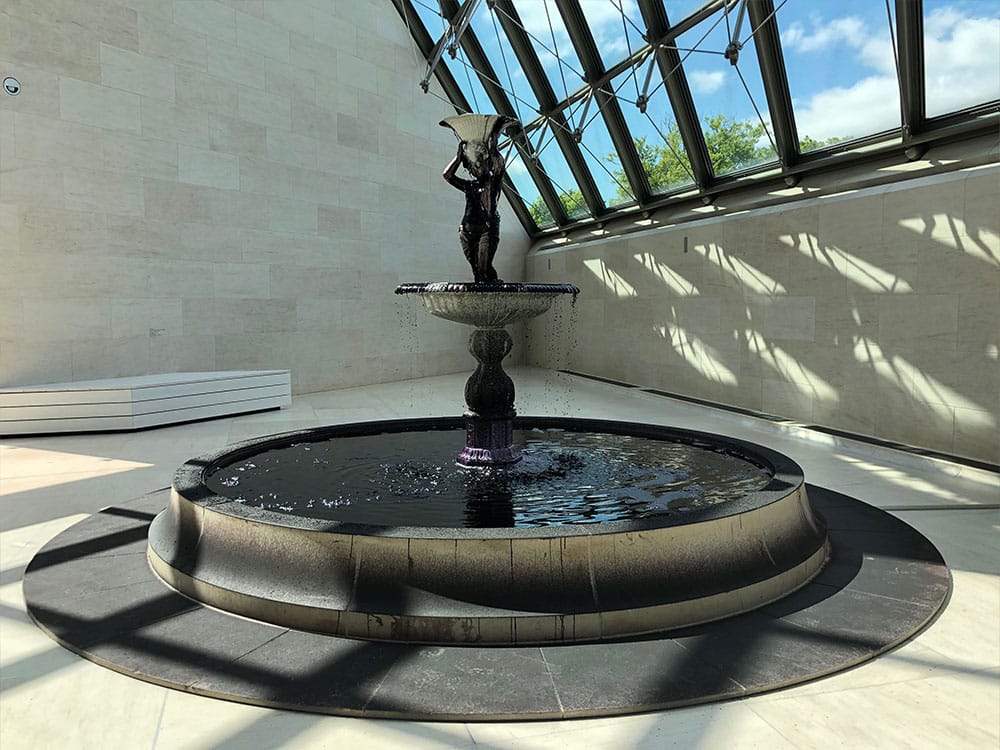
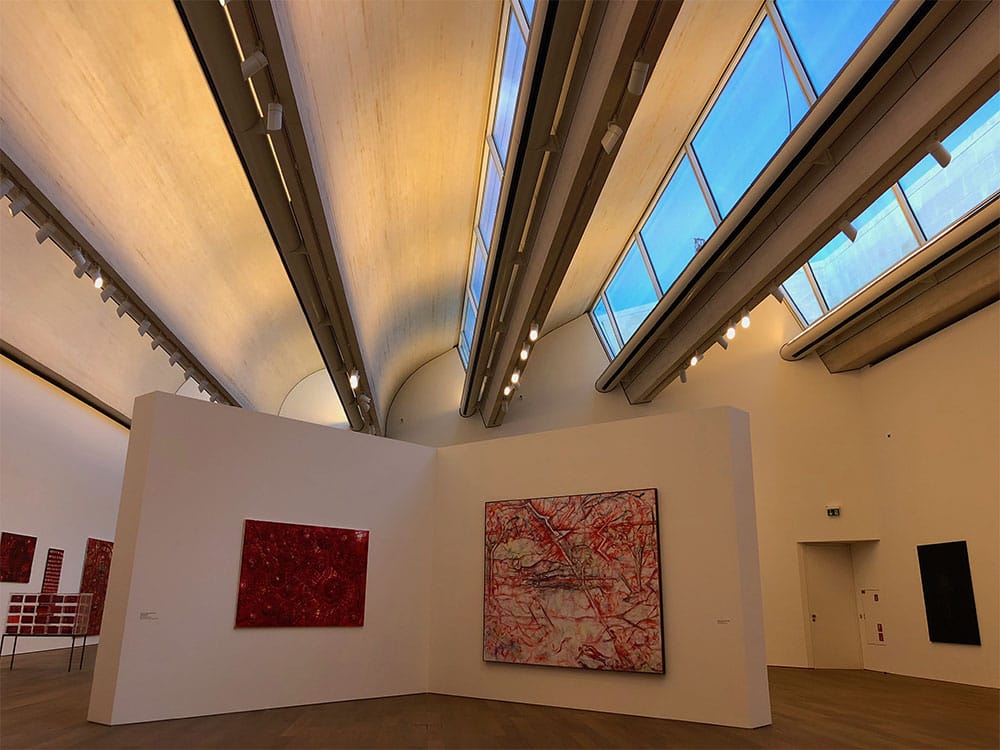
The museum’s modern and contemporary art collections include works from a wide assortment of artists, notably Daniel Buren, Tony Cragg, Richard Deacon, Günther Förg, Andreas Gursky, Sir Richard Julian Long, Bruce Nauman, Julian Schnabel and Andy Warhol.
The cost of admission is € 8 for adults, € 5 for persons under age 26, and free to anyone under age 21. Admission is included with the Luxembourg Card. For more information, visit the museum website at www.mudam.com.
Fort Thüngen
Following the Treaty of London of 1867, Luxembourg was required to dismantle and demolish its military fortifications. Among those fortifications was Fort Thüngen, which was leveled to all but the three towers that are visible today.
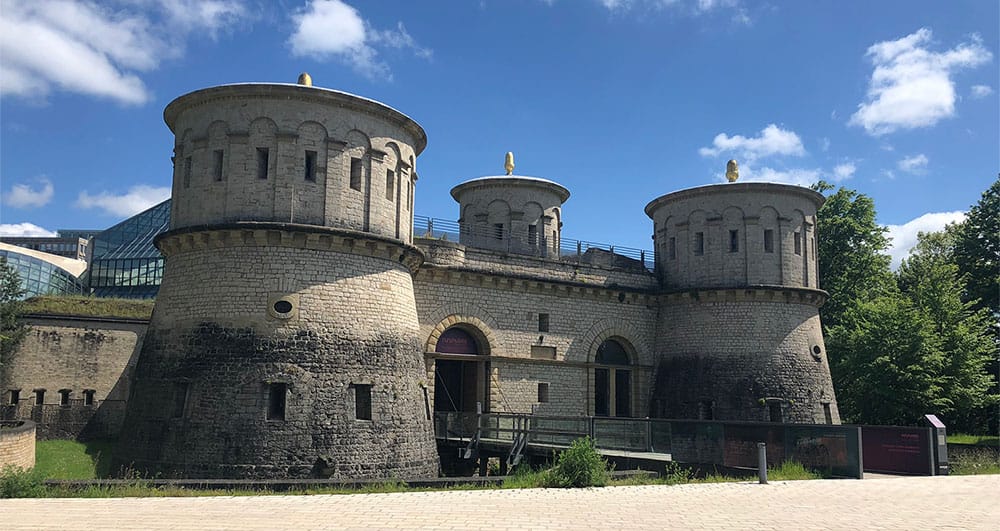
The fort was reconstructed in the 1990s, and it became part of Luxembourg City’s recognition as a UNESCO World Heritage Site in 1994. Today, Fort Thüngen houses the Musée Dräi Eechelen, or Three Acorns Museum. The museum tells the story of Luxembourg from its capture in 1443 by Burgundy to the construction of the Adolphe Bridge in 1903.
Wheelchair users can access the museum, all exhibitions and the underground gallery. Admission to the permanent exhibition is free of charge, while entry to the temporary exhibitions is € 5 for adults. More information can be found on the museum website at www.m3e.lu (in French).
Luxembourg City Museum
Of all the museums I visited in Luxembourg, the Luxembourg City Museum was my favorite. History museums are so often drab, but this one covered more than a thousand years of history through dynamic exhibits that capture one’s attention. It reminded me of the innovative Amsterdam Museum, which I previously said could change the way people think about history.
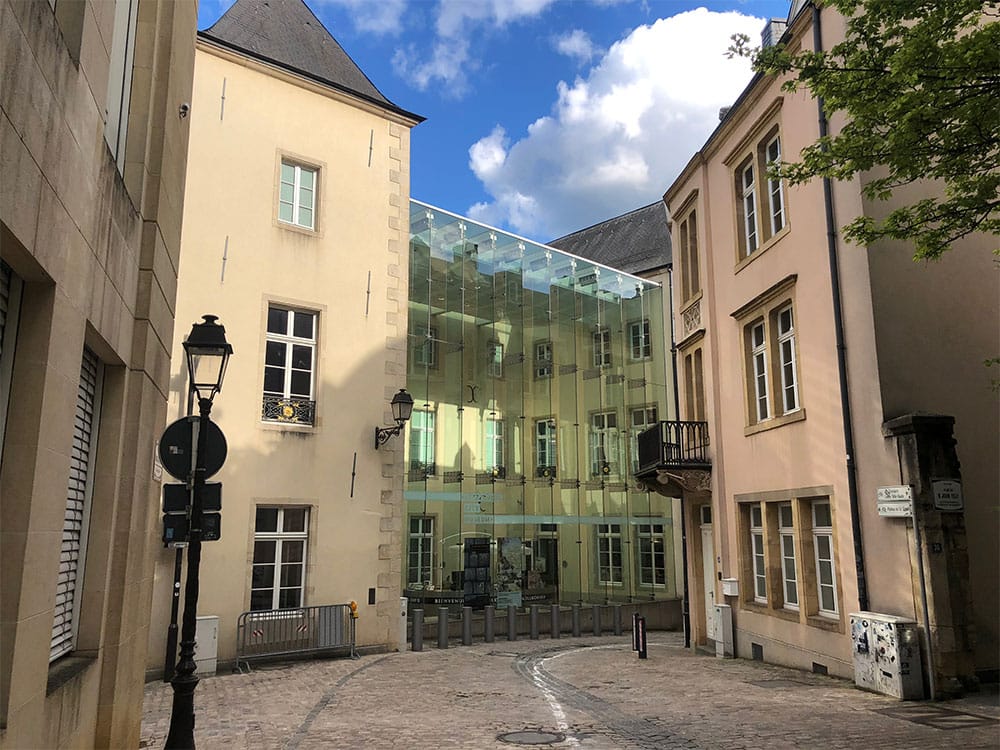

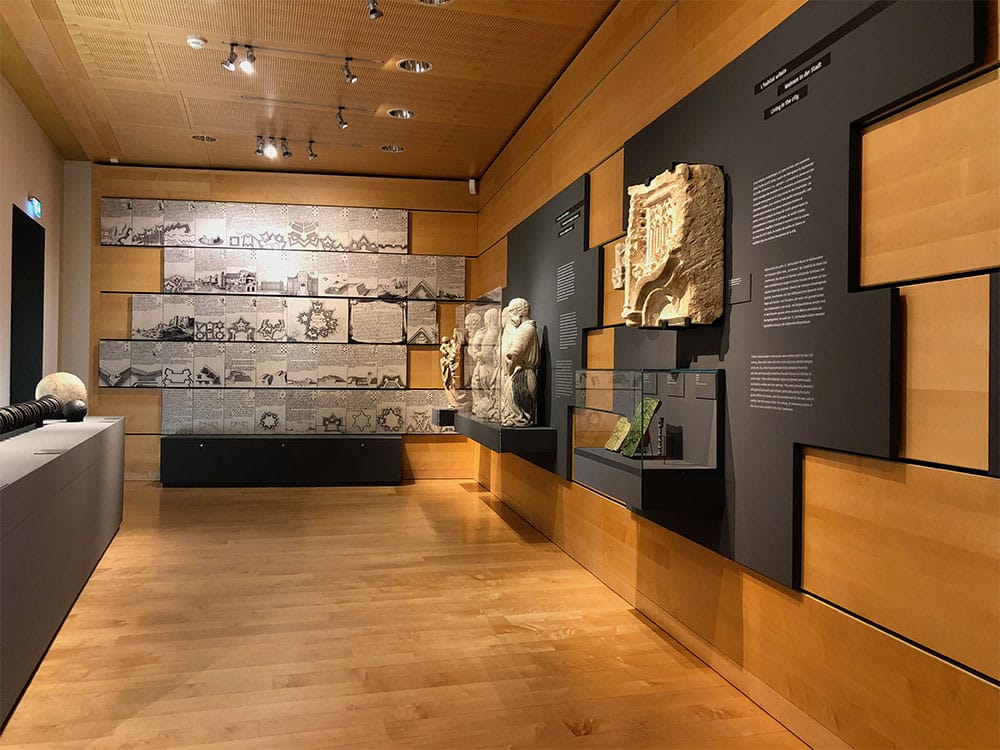
Spread across 6 floors, the Luxembourg City Museum is large, but manageable. If you’re not much of a history buff, you can get the highlights in 90 minutes or less. If you’re a historian, give it an extra hour. No matter how long you stay, you’ll enjoy the museum’s high level of wheelchair accessibility.
The cost of admission is € 5 for adults. It is free with the Luxembourg Card. For more information, visit the museum website at www.citymuseum.lu.
National Museum of History & Art
The National Museum of History and Art traces its history to 1845, when a society of historians and archaeologists assembled a collection of historic artifacts. Today, the museum that has resulted from that work occupies a modern structure in the city center, opened in 2002.
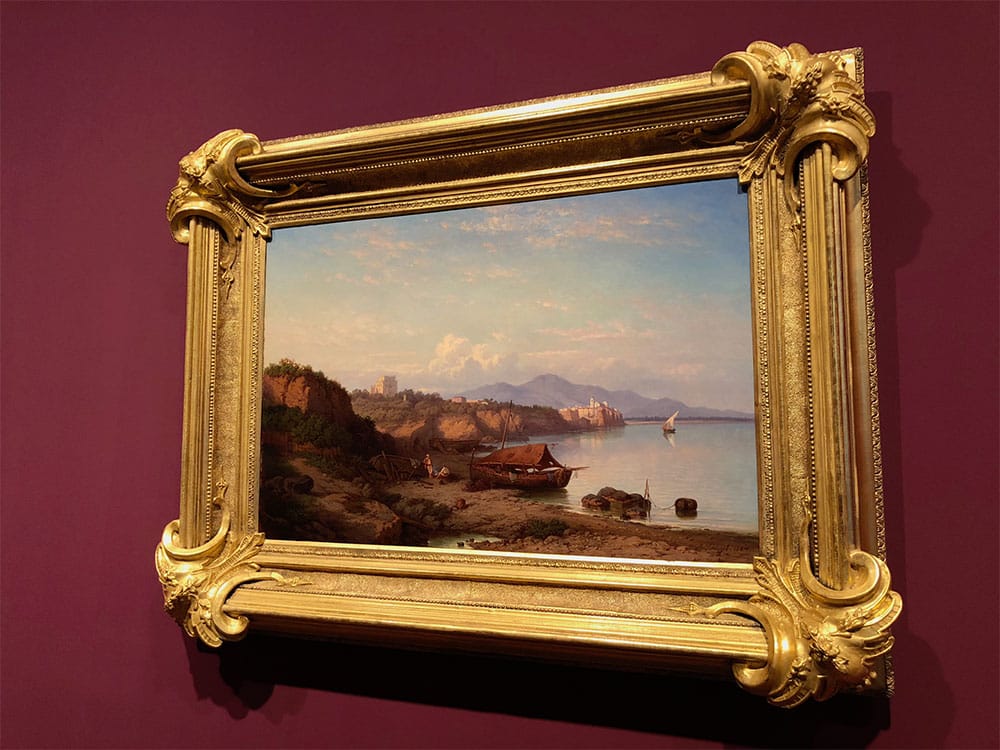
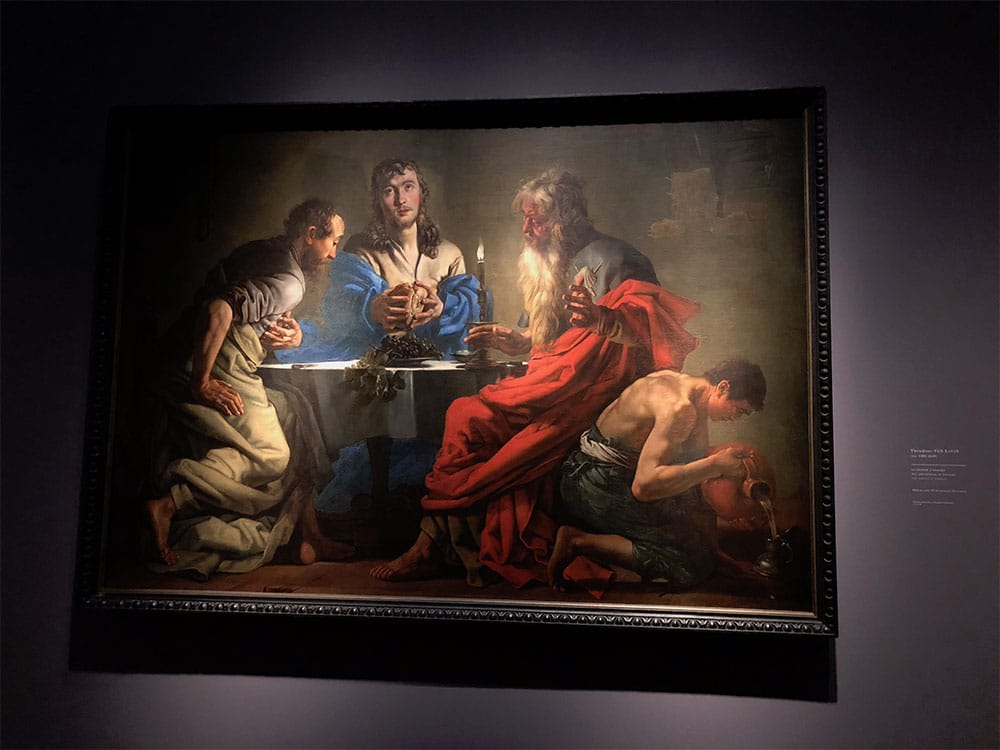
The museum has four major collections on display: archaeology, arts & crafts, coins & medals and fine arts. Books with foreign language translations are provided in each gallery, and the amount of information provided is extensive. You could spend an entire day in this museum and not be finished, so it is best to focus on the topics and mediums that interest you.
All floors of the museum are accessible via ramps between floors and an elevator. The cost of admission is € 7 for adults, while visitors under age 26 get in free. If you have the Luxembourg Card, admission is included. For more information, visit www.mnnha.lu.
National Museum of Natural History
Luxembourg’s National Museum of Natural History features permanent exhibitions across more than 10,000 square feet of space. Because English translations were not available throughout, I didn’t enjoy the museum as much as I might have.
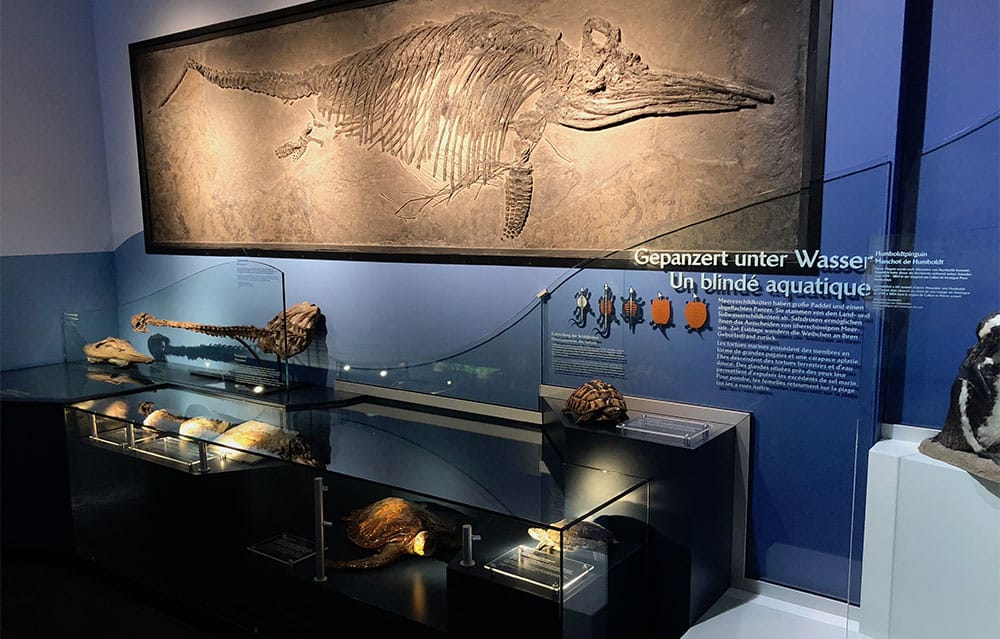
The upcoming temporary exhibition will focus on birds, drawing from a collection of more than 3,500 specimens from 1,300 different species. The museum is accessible, with a wheelchair lift to access the galleries.
Admission to the museum is included with the Luxembourg Card. For more information, see the museum website at www.mnhn.lu.
Pfaffenthal Scenic Lift
Opened in 2016, the Pfaffenthal Panoramic Elevator was designed to connect the historic city center with the Alzette river valley below. Due to the amazing views seen from the platform at an elevation of 197 feet, the lift has become a tourist attraction in its own right.
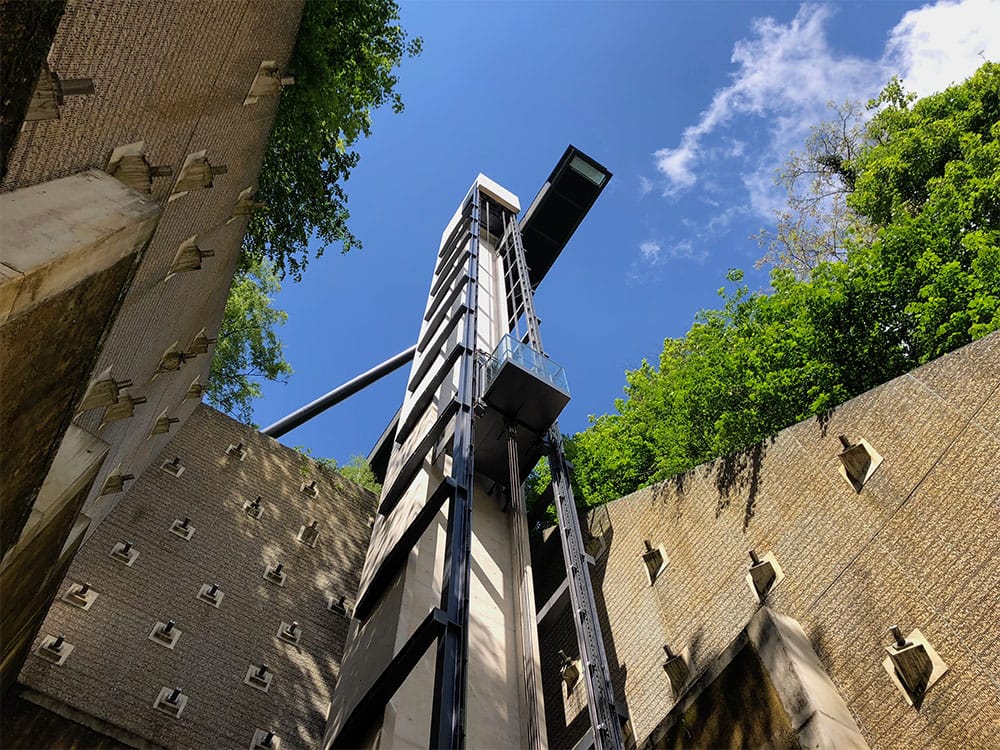
The elevator is free to ride. At the bottom, you’ll be able to connect with the funicular to reach other attractions including the Museum of Modern Art, Fort Thüngen and the Philharmonie, as well as the European Union’s campus in Kirchberg.
Place d’Armes
The most popular square in Luxembourg is the Place d’Armes. Tourists and locals alike are drawn to the many restaurants, with tables on the sidewalks and in the square. Musicians perform from the band shell in the summer, and in winter the square is host to the city’s Christmas market.
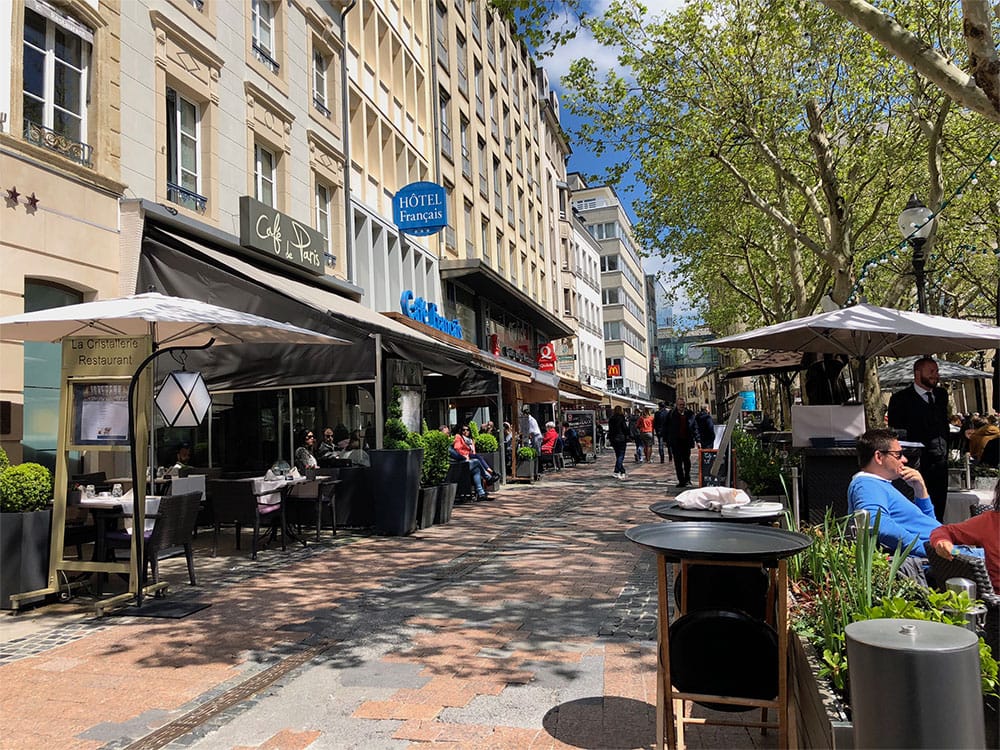
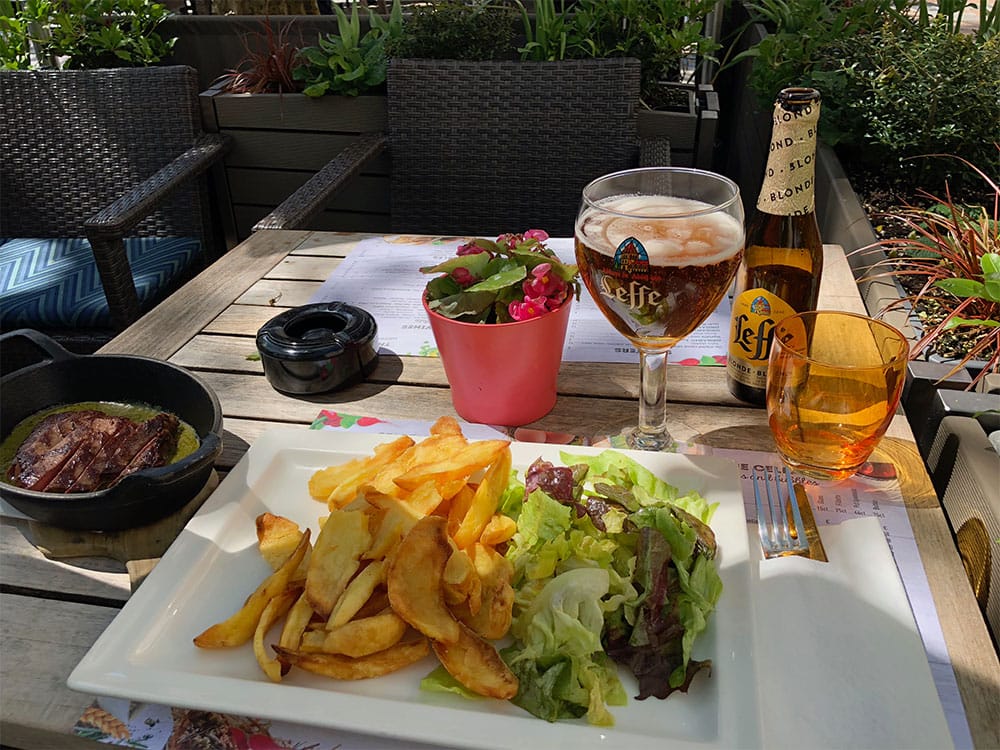
Although most of the businesses are not wheelchair accessible, there is a (free) accessible public toilet on the Southeast corner of the square, at Rue du Cure and Rue Chimay.
Place de Clairefontaine
The Place de Clairefontaine is located behind Notre Dame Cathedral in the historic city center. The Ministry of Foreign Affairs building is located on the plaza, and it is only a short distance from the Grand Ducal Palace.
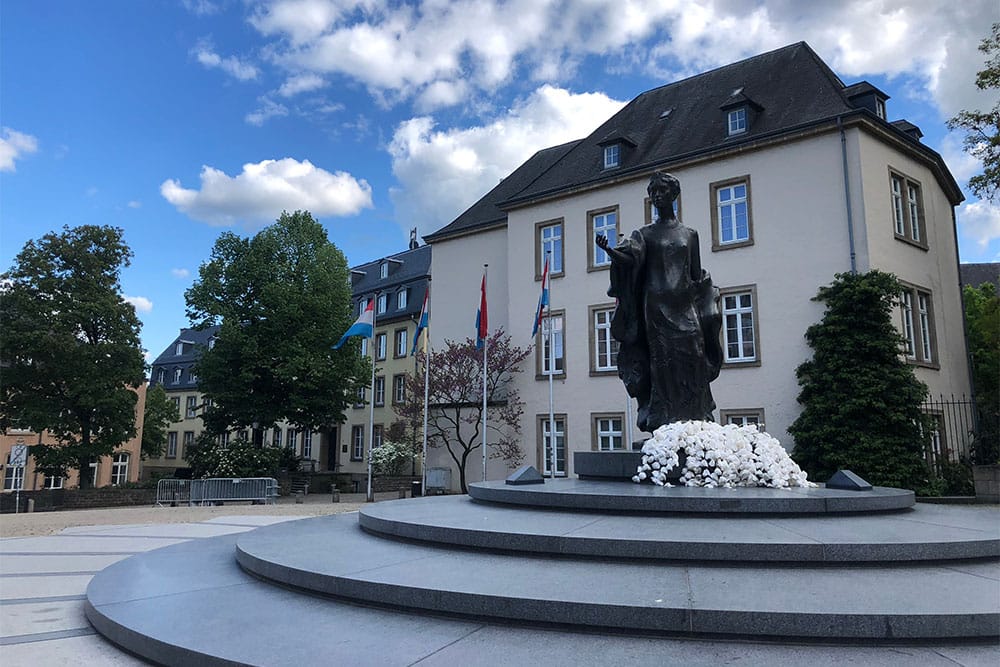
In 1990, five years after the death of Grand Duchess Charlotte, a statue in her honor was installed at the center of Place Clairefontaine. The plaza attracts locals and tourists to see the statue, and it is a popular gathering point. Place Clairefontaine also hosts a small market at different times throughout the year.
National Monument of the Solidarity
An eternal flame burns in front of the National Monument of the Solidarity, which commemorates those who died in World War II and honors the nation’s resistance in the face of the Nazi occupation.
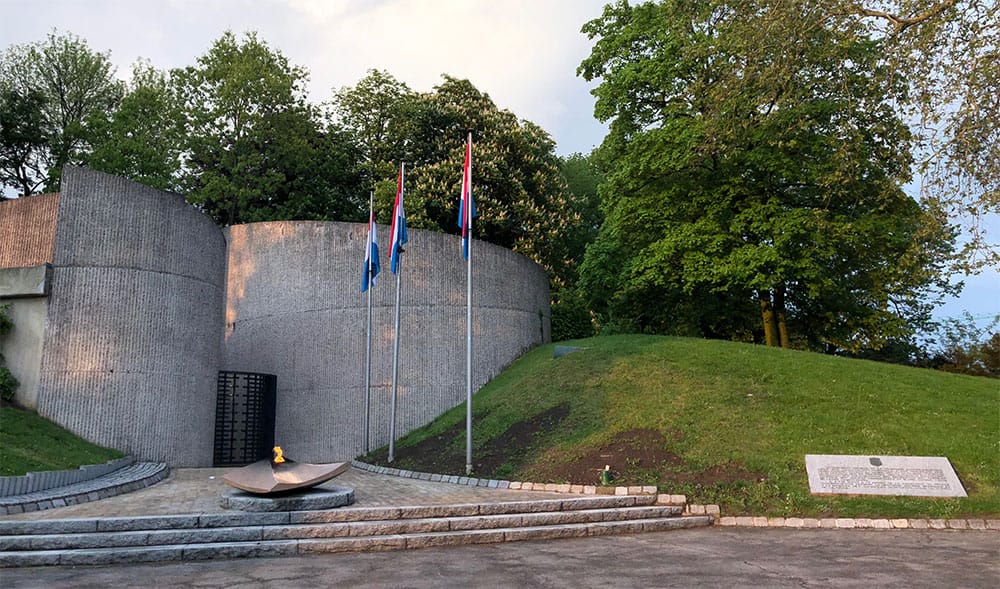
The monument is located at a place known as Cannon Hill, near the Passerelle Bridge, on the side closest to the city center.
Adolphe Bridge
Named for Grand Duke Adolphe, the first to reign over an independent Luxembourg, the Adolphe Bridge has come to represent the country’s independence. The bridge was built between 1900 and 1903, and has a total length of 502 feet.
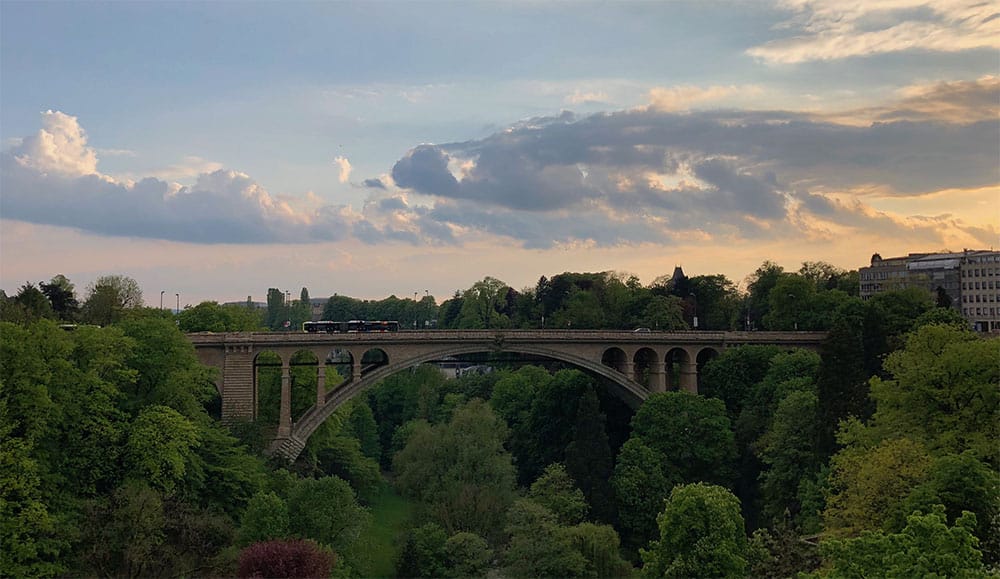
Locals refer to the Adolphe Bridge as the “new bridge,” because it was built about 40 years after the Passerelle, or Luxembourg Viaduct bridge.

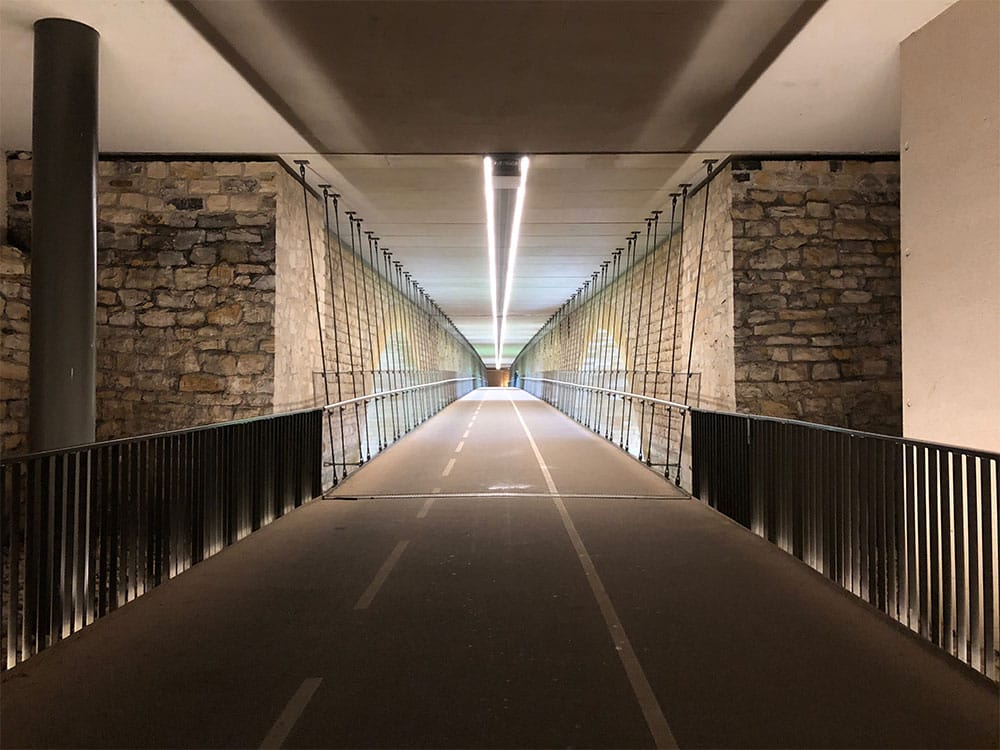
The bridge has two decks, with the upper carrying vehicular traffic in one direction, out of the city. The lower deck, opened in 2018, is reserved for bicyclists and pedestrians. The suspended lower deck was a great place to escape a downpour on a rainy day, and it is wheelchair accessible, with a gently sloped access path on both ends.



